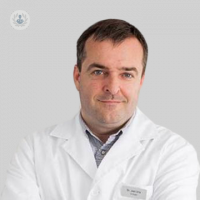What is the focal therapy for prostate cancer?
Written by:Prostate cancer is the most common in men of Catalonia, affecting 1 in 6, and the third deadliest, behind lung cancer and colorectal. Despite the statistics, specialists Urology claim that less than 3 of every 100 men die of this disease because it usually grows very slowly.
 The focal therapy in prostate cancer is proving to be an alternative source to radical treatment might as preserving sexual function and urinary continence patient. Still, validation studies on a large scale need to be able to offer a standardized way.
The focal therapy in prostate cancer is proving to be an alternative source to radical treatment might as preserving sexual function and urinary continence patient. Still, validation studies on a large scale need to be able to offer a standardized way.
Focal therapy aims to treat prostate cancer with a similar approach to other malignant solid organ pictures. Treatment is focused in the area of cancer and surrounding normal tissues in order to preserve the tissue and consequently organ function. Thus, the risk of damage nerves, muscles, urinary sphincter, bladder and rectum neighbors can be considerably reduced.
Using focal therapy of prostate cancer
Energy sources that can be used in the focal therapy for prostate cancer:
- HIFU (High Intensity Focused Ultrasound), developed in the early 1990s by the French Institute of Medical Research, the University Hospital of Lyon and EDAP TMS. It has been used worldwide routinely for more than 20 years in more than 40,000 treatments performed in 3 generations of commercial devices; the Ablatherm Maxis (1993-2005), Ablatherm®, integrated imaging (since 2005) and focal One® (since 2013) to treat prostate cancer by creating precise coagulation necrosis and irreversible tissue target while preserving the surrounding tissue.
- cryotherapy. In 1996, prostate cryoablation longer considered experimental to be recognized with a treatment option for prostate cancer by the American Urological Association (AUA).
Prostatic Cryosurgery is the in situ and controlled freezing of the prostate tissue in order to ablate a portion or the entire prostate gland to achieve eradication preserving the anatomic integrity of adjacent structures. The destructive effects of cryosurgery can be grouped into two mechanisms: cell damage and vascular damage Prostatic Cryosurgery is the in situ and controlled freezing of the prostate tissue in order to ablate a portion or the entire prostate gland to achieve eradicate the disease while preserving the anatomical integrity of structures vecinas.7Los destructive effects of cryosurgery can be grouped into two mechanisms: cell damage and vascular damage.


